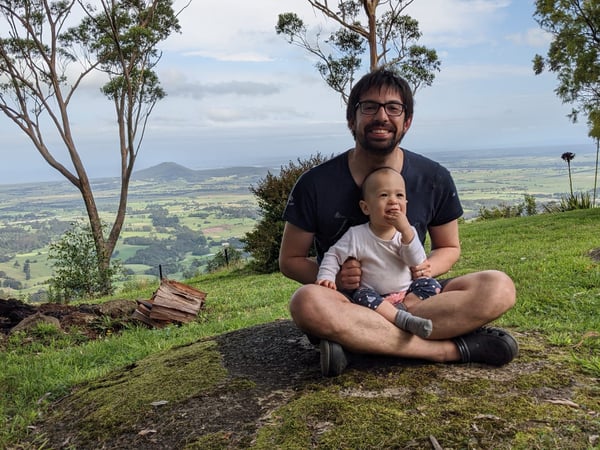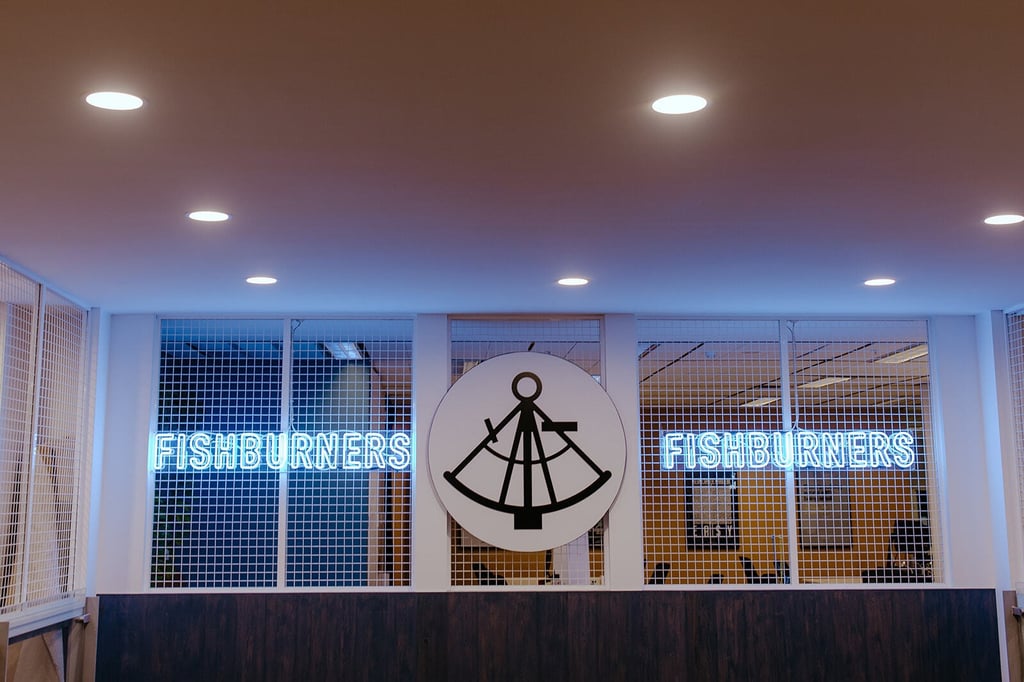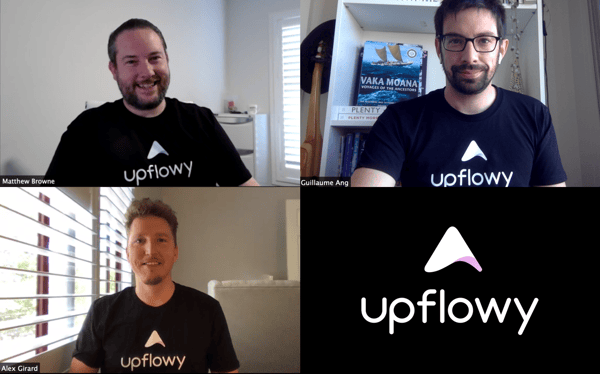Personas focus your marketing
There are countless tactics and tools for marketers, personas focus your marketing by building a story around your audience. You look to connect, to...
For 2020, it was all about turning challenges into an opportunity. From a challenge in our co-founders life, Upflowy was born!
The Christmas break was a perfect opportunity to reflect on the tumultuous journey that was 2020. So many drawbacks but even more wins. From spending 2 months at the hospital with my son to his first birthday. From the end of a startup journey to the creation of Upflowy.
Hopefully, you will enjoy reading about this ride as much as I enjoyed writing about it.
Let me start from October of 2020 and work my way back, as it will make sense soon. It was at the start of October that we finalised Upflowy’s raise. It has been a faster than expected process, we were leaving a lot of money on the table and were bringing in amazing people to support our business’ journey.
Upflowy was supported by key customers and there was more demand than we could service. To make October seem like an even bigger month than anticipated, my side hustle, a consulting business named LeanData.io was thriving, with a 300% growth compared to the year before.
At the start of October, it occurred to me that just a year before, I was experiencing a different type of emotion. I was waking up to the terrifying news that my wife was starting her labour about 10 weeks in advance.
October 2019, I was still in the midst of trying to painfully progress fundraising for a company that was trying to change how people access wellbeing support. While the company had received early support from investors and had a strong team, it was still looking for its market.
My consulting company LeanData.io was doing alright, smooth at times, and more complicated to navigate a few months during the year. Although only requiring 4 to 8 hours a week of work managing my consultants, this type of business can become mentally taxing when customers start to complain. But of course, in comparison to the journey I was about to experience, this wasn’t the main concern for me.
My wife and I (still in October 2019) were on a weekend away, most likely one of the last we were planning to do before the birth. We were just starting to prepare ourselves, had booked some delivery classes – but we didn’t even have any baby names in mind. Basically, we were slowly getting ready to become parents.
It was a bit more real to my wife, but overall, we’re never been the best at getting ready well in advance.
To continue on from the night that shaped a lot of my 2020 – I surprisingly woke up at 4 am, discovered my wife wasn’t feeling well. Only 15 minutes later, we were on the road to look for the closest hospital.
We arrived at a regional hospital on a Sunday morning with no paediatrician on hand. By the time she arrived two hours later, the labour couldn’t be stopped. I recall overhearing conversations between the hospital who couldn’t deliver this early baby without risk, and the ambulance people who couldn’t drive to the nearest well-equipped hospital without risk. I knew things were not going to be easy.
A close call was made, my wife gathered all the strength she had to wait for the bigger hospital and 30 minutes after arriving, my son was born, surrounded by an army of doctors and midwives, so focused on their critical task, that no one thought about checking the sex of the baby.

As you can imagine, what followed was three months of back and forth between different hospitals. For me, it was becoming a full-time dad to support my wife and kid. Each transfer required complex transportations in MadMax like machinery offering life support to my son.
We experienced so much up and down during this period, punctuated by a small heart surgery on the kid and also regular glimpses of happiness. Then finally the feeling of sheer joy, with us leaving the hospital on December 25th dressed as Santa’s elves.
Meanwhile, the business didn’t stop but started to derail. The wellbeing support business mentioned earlier seemed less and less attractive to my co-founders who were feeling like the nature of wellbeing support itself was failing to deliver long term outcomes for our users.
While I was busy acting as a full-time dad to support my wife and my son, I wasn’t supporting my co-founders and was letting them improvise the part I was supposed to play as an experienced operator of early-stage startups.
The fundraising slowly came to a halt and with Christmas closing in on us, this was not helping. Of course, naturally, my co-founders started to feel overwhelmed with the variety and the novelty of tasks, part of which was initially mine.
The retail consumers of my consulting business, nearing the intense Christmas period, were feeling the pressure and we started facing scaling stress on the systems we implemented for them – I was needed back, but my family needed my support too.
Then we fast forward to March of 2020. We experienced an intense period of bush fire smoke in the hospital and then back at home during the summer season.
The technical co-founder of the mental wellbeing business left, and despite the abundance of external reasons, I believe that the lack of traction is always a key ingredient in any founder’s split. When traction is there, resilience usually finds a way. My other co-founder had walked away from our initial focus on wellbeing support and was heading towards performance coaching. Plus, then, the effect of COVID started to show. My consulting consumers started asking for discounts and all HR departments started to anticipate the wave of the pandemic and closed their door to innovation (which is where I could help).
I took the cue and with no stable income other than my consulting company, that looked definitely under threat – I needed to do something. Also, I had my son who would soon have to go to an Australian Childcare, which represents a small salary in itself.
I came to the conclusion that my time investing in this first company was up. I had the talk with my co-founder and let him know that I gave myself two months to investigate other opportunities, and started looking around.
At this time, I’m surrounded by entrepreneurs, for a rather long list of reasons:
As a result, I uncovered four opportunities in less than two months.

Three opportunities came from talented teams of Antler entrepreneurs which I helped refine their vision, prepare their deck for the Investment Committee of Antler and test commercialisation strategies.
For this, I received 2 offers to join as an equal co-founder.
In the background, I had this hitch about a topic that was close to my core skill, data-driven growth. I kept talking to entrepreneurs who were struggling with their acquisition funnel.
More specifically, while most of them acknowledged that their paid acquisition strategy was a skill they needed to pay for, they all felt like the conversion strategy once they landed potential leads on their website was up to them to design. While it was easy for them to implement some basic A/B test of their landing page and call to action, I kept hearing the same statement: “we need to work on our signup flow”.
What was even worse is that this statement came with the less than proud realisation that months of traction have been wasted on a poor converting signup flow, which they couldn’t freely tweak because it had been implemented by their IT team, which was now focused on key product features.
Then came Alex and Matt.
Alex had been in my close entrepreneur circle since my first days in Australia in 2013. He had come, like I did, with his partner, and was after a refreshing change of scenery after years working in France when he landed. We had immediately connected and spent three months building a mobile app destined to enhance couples long distance relationships. We failed miserably but were still very keen to work together on something bigger. Alex had recently invested all his shares as a CTO in a dynamic but long tail business where he had seen a lot already. Timing.
Matt was and will likely always be a UFO to me. Same age as Alex, and I, but decades more of solid experience creating businesses, raising funds, investing and finding exits he couldn’t have humanly fitted in 35 short years. We first connected while being both speakers at a conference on Lean Startup years back. He already had an impressive track record and I could sense a down to earth person I could really talk to – so I asked him to mentor me. Fast forward a few years, and I discover that he is already a Limited Partner of Antler, where I’d just been accepted as an entrepreneur for their first Sydney cohort. Our relationship grew further during this experience and I was already so happy to be able to rely on him as a close advisor for all things business at the start of 2020.
When I brought him the idea behind upflowy, Matt has recently exited his main SaaS venture to a large US group – he is about to launch his own Venture Capitalist fund, but he still has a hitch for launching his own business. Again, timing.
Alex understood the issue intimately, both as the Tech Lead who has faced constantly changing requests from marketing departments (and has had to turn them down) and as the startup executive who has had to help his co-founders look further into the data to understand where acquisition failed.
Matt took the idea away and challenged it in a matter of days both with early stage and already successful businesses. The need was unanimous.
Something that I need to address now is that it had taken me years to identify my own weaknesses, and that at this stage, I’m quite lucid on the type of talents I need to surround myself with. I need someone with a strong capacity to do regular reality checks on the product to make sure I don’t build a monster driven by my capacity to sell. That’s Alex.
And I need someone who is able to cut through the complexity to make things happen at the right timing. That’s Matt.
I’m not shy to say that, from 10 years invested in creating startups, the statement above is one of the most valuable outcomes. We meet. Once, then twice. Then things go fast. Matt introduces me to customers. Alex builds a Minimum Viable Product. Everything is a green light.
I’m still considering one of the Antler opportunities, supported by a team of founders working on a topic I can relate to. They’re both people I absolutely trust. And they’ve already started raising with ease.
I’ve started looking into their acquisition funnel. Turns out that not only do they share the same pain I pitched to Alex and Matt, but I also know no solution to solve it other than paying an IT team to do it. Or with Upflowy.
This really was my turning point. I would never be able to commit to any other business without staring at the gap I would have left open if I didn’t create Upflowy.

So now, we’ve assembled a solid group of early customers, advisors and investors around us.
Matt has led a funding round in a record time, and at a comfortable valuation for the Australian ecosystem. I’ve experienced investor FOMO first hand, on the right side of the fence.
In the meantime, I’ve landed a great new customer for my consulting business, by simply focusing on LeanData core value prop, the fast and iterative development of agile operations.
One of my key customers had benefited a lot from COVID, being an e-commerce retailer servicing families with affordable but innovative and quality sport items, and he has started to rely on our services more for the flexibility we offer, and probably for the fact that we really care.
But by the time you read these lines, I’ve already learnt more and can not wait to share it with you.
I’ll be writing these Net Positive episodes regularly, so hopefully if you’ve got something positive from it, you’ll be interested in reading the next one, talking about recruiting a great team and bringing an innovative product to the world.
So for 2020, these are some of my key takeaways:
How did you navigate 2020? I’m eager to hear about your feedback or any like-minded stories in the comments.
There are countless tactics and tools for marketers, personas focus your marketing by building a story around your audience. You look to connect, to...
Carlos Gonzalez de Villaumbrosia shares how Product School is challenging the education industry and how he is maintaining a lifelong learning...
Timothy Connell joins Upflowy as our new Head of Product, and we look into his journey, his processes and what the future holds for Upflowy.
Upflowy makes building forms for your business easy, a drag and drop tool to create engaging and enticing experiences with your potential customers. Whether it be a booking form, a feedback survey or a fun quiz, you'll see the results flood through.
Not only is it easy to bring into your website, but you can connect it to the apps your business use so that all the answers are in the right place.